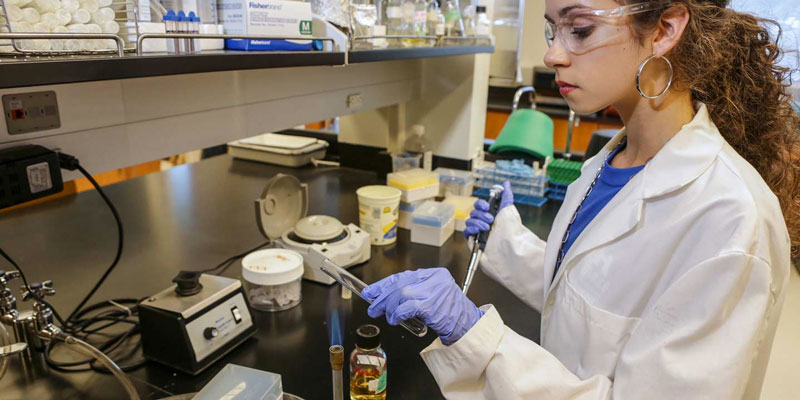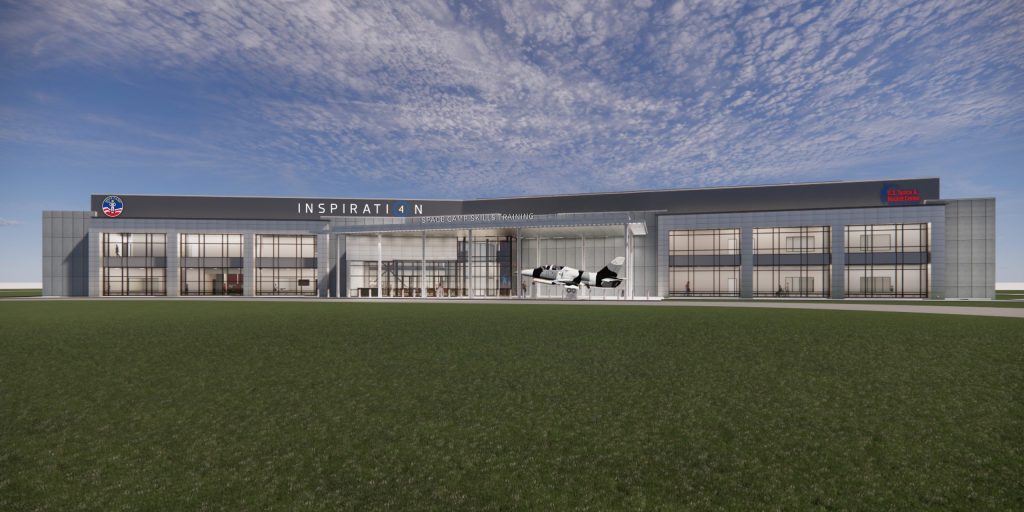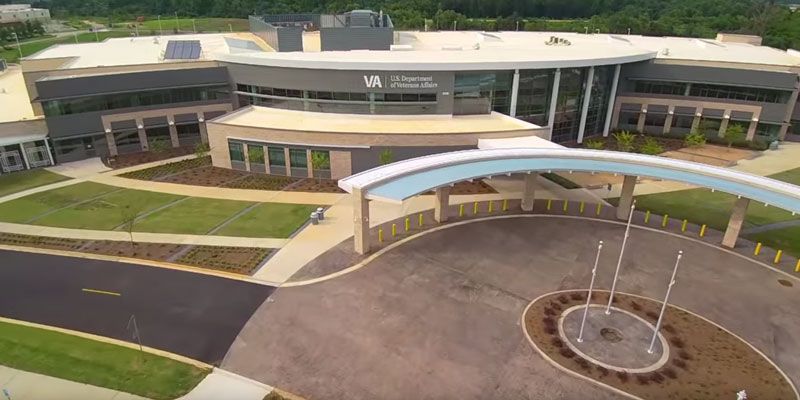With the help of in-state research universities like the University of Alabama at Huntsville (UAH), Alabama’s bioscience industry is rapidly becoming an economic driver, according to a recent report from the Biotechnology Innovation Organization.
In a press release on Wednesday, UAH discussed how the industry’s boom is a “rising tide” that “lifts all boats.”
The Yellowhammer State’s research universities account for $631 million in bioscience-related research and development (R&D) expenditures annually, which is equivalent to a whopping 69 percent of all academic R&D in Alabama. This is also well above the national average. In what is perhaps explained by Senator Richard Shelby’s (R-AL) influence on federal government appropriations, the state’s research universities receive nearly $298 million in funding every year from the National Institutes of Health (NIH).
Public sector leads the way
UAH, especially, has seen success with NIH funding and this is no accident. In 2012, the university codified as a priority its intention to become a recognized leader in the area of biotechnology education and research in “Expanding Horizons–A Strategic Plan: 2013-2020.” Pursuant to that priority was the need to increase expenditures and funding from sources like the NIH, which would support the collaborative efforts of UAH’s academic and institutional research units.
Today, the Huntsville university is well on its way to achieving that lofty objective. Since the strategic plan’s formulation, UAH has received more than $2 million in NIH funding, while making available several new biotechnologies for the marketplace through its Office of Technology Commercialization (OTC).
These concrete successes include the development of anti-fungal technologies, a method of extracting lipids from algae without dewatering, a microfabricated oligonucleotide synthesis tool, a chemically assisted rapid algae harvesting technique, a technique to produce recombinant proteins for crystallization using polymerase chain reaction-based gene synthesis, over the counter rapid detection of chlamydia, a novel T-cell immunotherapy that uses nanoparticles and a new way to deliver nucleic acids using a polyethylene imine-cytokine conjugate.
Private sector shares in the successes
The public university’s bioscience boom has also paved the way for several startups to spin off. Gene Capture, which has successfully demonstrated a completely new process for rapidly determining the genetic signature of a pathogen, is the brainchild of Dr. Krishnan Chittur, a professor emeritus in UAH’s Department of Chemical and Materials Engineering, UAH biology professor Dr. Joseph Ng, UAH adjunct professor Dr. Mark Pusey, and UAH alumnus Jeff Dowell.
Gene Capture’s disposable test cartridge is about the size of a smartphone and can analyze a human or animal sample to detect the presence of a broad range of specific bacteria, viruses or fungi in less than an hour.
Dr. Ng is also the founder of iXpress Genes, which specializes in protein services and instrumentation, and protein and genetic engineering research, and enjoys exclusive access to a suite of hyperthermophilic genomes from the deep-sea vents of the Atlantic Ridge. Both companies are located on the campus of the HudsonAlpha Institute for Biotechnology, a not-for-profit biotechnology organization co-founded by UAH alumnus Jim Hudson and located in Cummings Research Park.
Kannan Grant, the OTC’s director, said, “North Alabama has a very robust and thriving defense and aerospace industry, but with the same mindset and expertise, we can diversify our economy by continuing to develop an equally robust biotechnology industry. We have done exceptionally well and need to continue on that trajectory – and our efforts should not just stop with biotechnology. We need to look at other industries as well, such as automotive, software, cybersecurity, and alternative energy technologies.”
Huntsville and UAH are mutually beneficial
For Dr. Jerome Baudry, endowed Pei-Ling Chan Eminent Scholar and professor in UAH’s Department of Biological Sciences, the opportunities afforded by both the university and its location in the thriving city of Huntsville have been integral to his ability to use high performance computing to push drug target-and-hit discovery into prediction of pre-clinical and clinical outcomes.
“I moved my research laboratory to UAH to leverage an academic and industrial R&D environment that is unique in the nation, thanks to UAH, the HudsonAlpha Institute of Biotechnology, and the many biotech companies in Cummings Research Park and beyond. By integrating my own academic R&D laboratory with industrial partners, I have seen the differences it makes to do my research here at UAH and in the Huntsville community,” Baudry outlined.
Baudry is far from the only doctor with this type of story. Dr. Surangi Jayawardena, an assistant professor of chemistry, has been able to successfully harness the resources of both UAH and the surrounding community to further her research designing point-of-care rapid diagnostic kits for pathogenic bacteria and exploring anti-infective nanotherapeutics to treat nosocomial infections.
“I synthesize my own nanomaterials and make the surface modifications to do biological conjugation to target microorganisms,” she explained.
In return, her rarefied skill set, like Dr. Baudry’s, not only enhances the university’s reputation but also that of the entire North Alabama region.
“I’m really glad to be here at UAH, because I bring a different angle to research, one that is geared toward medical applications,” Jayawardena added.
Strengthened by its research prowess, UAH’s academics are now fueling Alabama’s workforce
Complementing its impressive research efforts are the university’s academic programs, which serve as a much-needed pipeline for the region’s workforce. Today’s students – and tomorrow’s bioscience pioneers – have seven to choose from: Bachelor of Science degrees in chemistry with a concentration in biochemistry, in biology with concentrations in microbiology and biochemistry, and in chemical engineering with a concentration in biotechnology; Master of Science degrees in biology and in chemistry; and doctoral degrees in biotechnology science and engineering and in nursing science with a concentration in omics.
Additionally, starting in the summer of 2019, a joint program with the Capstone College of Nursing at the University of Alabama – the Nursing Science Ph.D. – is poised to be the first online program of its kind as well as the first joint Nursing Science Ph.D. program in the state.
“An omics revolution is occurring in healthcare, and nurses are in a key position to be part of interdisciplinary teams who make scientific discoveries in biology at the molecular level that impact human health and the environment,” Dr. Pam O’Neal, an associate professor in UAH’s College of Nursing, advised. “Breakthroughs in disease treatment and health promotion with personalized medicine approaches will change the future of healthcare. With this program, we are on the frontier of exploring methods to improve and manage health by investigating genomics, proteomics, transcriptomics, epigenomics, pharmacogenomics, microbiomics, and exposomics.”
Impact on Alabama’s aerospace industry
Also, laser-focused on the frontier of healthcare, and in niche Huntsville fashion, is the College’s Nursing and Aerospace Committee. Since 1970, it has been involved in space programs and research activities, partnering with not just UAH’s Colleges of Science and Engineering, but also with commercial and federal entities like the U.S. Space & Rocket Center and NASA’s Marshall Space Flight Center.
“The College has played a significant role in the history of aerospace nursing with its ties to the formation of the Space Nursing Society and given the current conditions of nursing and the aerospace industry. And it will continue to play a significant role in shaping this specialty by conducting research, collaborating with other institutes, and increasing humanity’s knowledge about advances in aerospace nursing,” Dr. Azita Amiri, an assistant professor of nursing and the committee’s chair, said.
The bottom line
While there are seemingly endless examples to share about the ways UAH has endeavored to fulfill its commitment to be a recognized leader in biotechnology, what binds them all together is vision – the university’s mission to be a preeminent, comprehensive, technological research-intensive institution known for “inspiring and instilling the spirit of discovery, the ability to solve complex problems, and a passion for improving the human condition.”
This, in turn, is combined with a much larger vision, one that sees the region and the entire state of Alabama at the forefront of the bioscience industry and growing through the support of trade organizations like BIO Alabama (which represents the state’s bio-related industries), research scientists, and clinicians. With entities like these working hand-in-hand, Alabamians hope that the strikingly upward trend of the last decade will continue well into the future, to the benefit of current and future generations.
Sean Ross is a staff writer for Yellowhammer News. You can follow him on Twitter @sean_yhn













